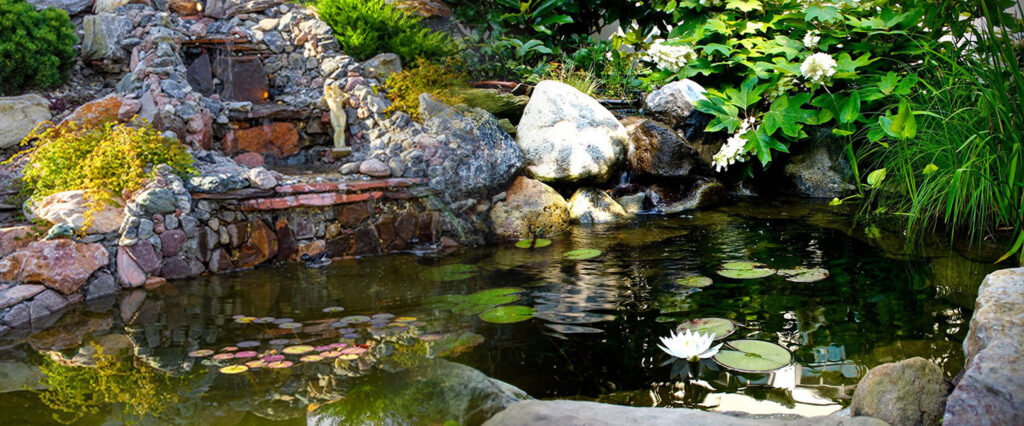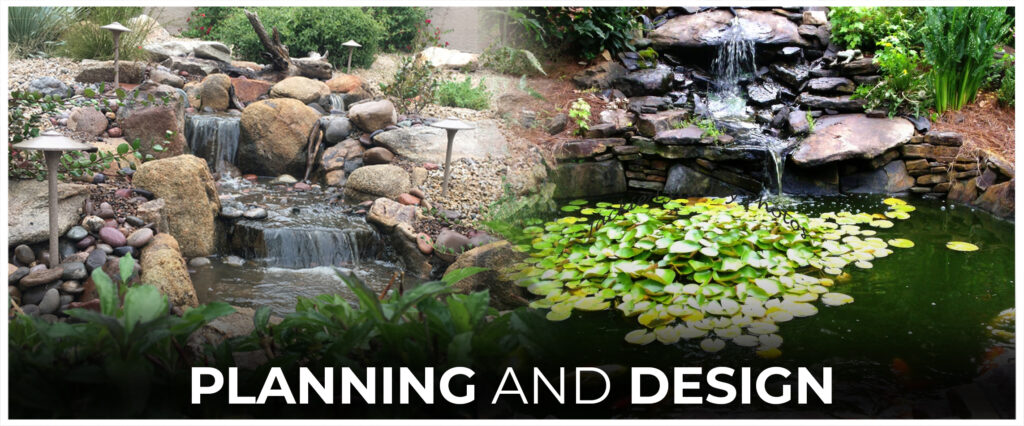Expert Advice: Essential Steps for Successful Pond Installation

Transforming your backyard into a serene oasis often involves incorporating a water feature, and what better way to achieve this than with a professionally installed pond? Whether you’re envisioning a peaceful koi pond or a vibrant water garden, the success of your project hinges on proper pond installation and construction.
In this guide, we’ll delve into the essential steps experts recommend to ensure a successful pond installation that enhances your space’s aesthetics and creates a thriving ecosystem for aquatic life.

Planning and Design
The first and foremost step in any successful pond installation is meticulous planning and design. Consider your pond’s purpose—will it be a habitat for fish, a water garden, or a combination of both? Consult with a professional pond installer who can help you know the ideal size, shape, and location based on your vision and the natural layout of your backyard.
Consider factors such as sunlight exposure, existing trees, and proximity to utilities. A well-thought-out design ensures that your pond seamlessly integrates into the landscape while meeting your aesthetic and functional goals.
Site Preparation
Once the design is finalized, the next step is site preparation. Clear the chosen area of any debris, rocks, or roots that may interfere with the excavation process. It’s imperative to create a level and stable base for your pond, and professionals often use heavy machinery to excavate the area efficiently.
Pay careful attention to the depth of the pond, ensuring it accommodates the specific needs of the aquatic life you plan to introduce. Professionals recommend digging shelves or ledges at varying depths to provide different zones for plants and fish.
Pond Construction
The pond construction involves the installation of the pond liner, a critical component to prevent water leakage. High-quality pond liners, such as EPDM rubber liners, are recommended for their durability and flexibility. Ensure the liner is correctly fitted to the excavated area, leaving sufficient overhang to secure the edges.
Expert tip:
To minimize the risk of punctures, add a layer of protective underlayment beneath the liner. This extra precaution safeguards against potential damage from sharp rocks or roots.
Filtration and Aeration Systems
A successful pond is not just about its visual appeal; it’s about maintaining a healthy and balanced ecosystem. A filtration system is essential to keep the water clean and clear. Choose a filtration system based on the size and type of your pond, and consider combining mechanical and biological filtration for optimal results.
Additionally, aeration systems play a crucial role in maintaining oxygen levels in the water. Aeration promotes a healthy environment for fish and beneficial bacteria while preventing the formation of stagnant areas. Consult a professional to determine the appropriate filtration and aeration systems for your pond installation.
Plant Selection
Introducing aquatic plants to your pond adds natural beauty and contributes to its ecological balance. Consult with a horticulturist or pond expert to select suitable plants based on your pond’s size, water depth, and sunlight exposure. Plants not only enhance the aesthetics of your pond but also provide shade, reduce algae growth, and offer shelter for fish.
Water lilies, iris, and submerged plants are famous for water gardens, while oxygenating plants like anacharis contribute to water clarity and quality. A well-balanced mix of floating, marginal, and submerged plants creates a visually appealing and ecologically sound pond ecosystem.
Fish Introduction
If your vision for the pond includes fish, careful consideration and planning are essential. Acclimate fish to their new environment gradually to reduce stress and improve their chances of thriving. Consult experts to determine the appropriate fish species for your climate and pond conditions.
Koi, for example, are beloved for their vibrant colors and graceful movements, but they require a larger pond with proper filtration and aeration. Experts recommend establishing a quarantine period before introducing fish to ensure they are healthy.
Regular Maintenance
A successful pond installation continues after construction and fish introduction; it requires ongoing maintenance to keep the ecosystem in balance. Regularly check and clean the filtration system, remove debris from the water surface, and trim overgrown plants to maintain a healthy and visually appealing pond.
Water testing is crucial to monitor pH levels, ammonia, nitrate, and other parameters impacting fish and plants’ well-being. Consulting with a professional pond maintenance service can help you establish a routine maintenance schedule tailored to the specific needs of your pond.
FAQs (Frequently Asked Questions)
How deep should my pond be for optimal fish habitat?
Your pond’s ideal depth depends on the fish you plan to introduce. Experts suggest a depth of at least 3 to 4 feet for koi to provide ample swimming space and protection from predators.
However, a depth of 2 to 3 feet may suffice for smaller fish like goldfish. It’s crucial to consult with a professional pond installer who can assess your specific needs, considering factors such as climate and local wildlife.
Can I install a pond in a small backyard, or does it require a lot of space?
Ponds can be successfully installed in smaller backyards, and their size can be tailored to fit the available space.
Consider compact designs, such as containers or raised ponds, which are well-suited for limited areas. Professional pond installers can help you maximize the use of your space, ensuring that the pond complements your landscape without overwhelming it.
Additionally, incorporating vertical elements like waterfalls or cascades can add visual interest and make a small pond feel more expansive.
Final Thoughts:
A professionally installed pond can transform your backyard into a tranquil retreat, providing a harmonious blend of nature and aesthetics. By following these essential steps—meticulous planning, proper site preparation, high-quality construction, thoughtful plant selection, and diligent maintenance—you can ensure the success of your pond installation.
Consulting with experienced pond professionals brings expertise to the project and ensures that your vision is brought to life in a sustainable and thriving way. So, embark on your professional pond installation journey confidently, and watch as your backyard oasis becomes a haven for you and nature.






